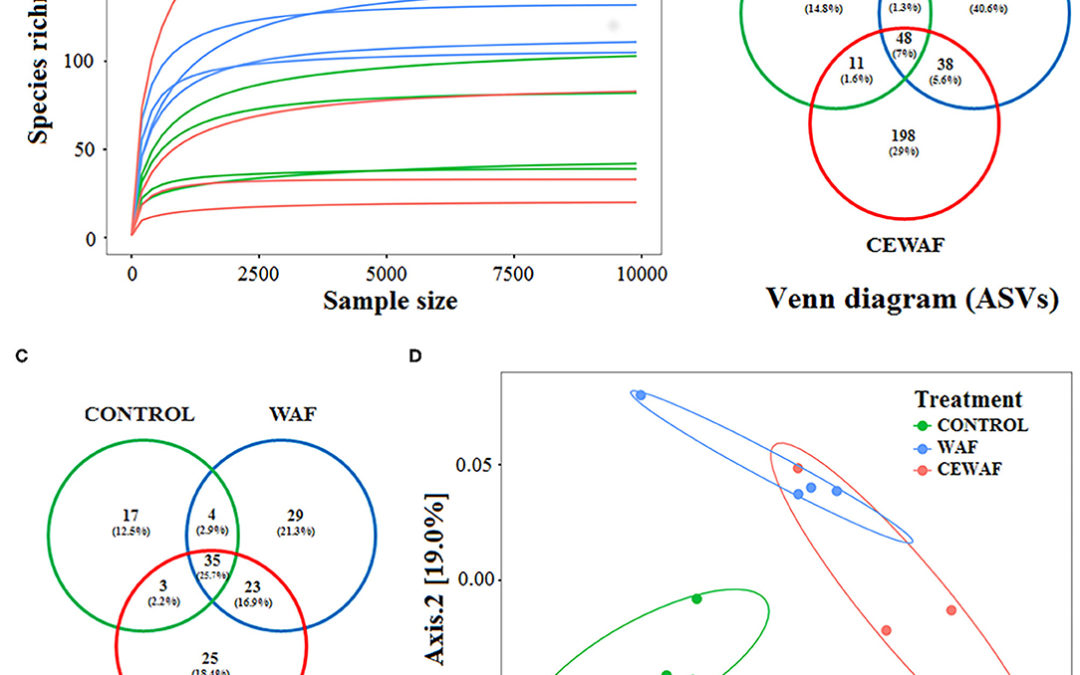Authors: Carlos Eduardo González-Penagos, Jesús Alejandro Zamora-Briseño, Daniel Cerqueda-García, Monica Améndola-Pimenta, Juan Antonio Pérez-Vega, Emanuel Hernández-Nuñez and Rossanna Rodríguez-Canul
https://doi.org/10.3389/fpubh.2020.584953
Abstract
Crude oil spills have caused substantial impacts to aquatic ecosystems. Chemical dispersants are used to palliate the impact of oil spillages, but their use is polemic due to their additional potential toxic effect when mixed with oil-derived components. In this work, we used a 16S-based metagenomic approach to analyze the changes of the gut microbiota of adult zebrafish (Danio rerio) exposed to the water accommodated fraction (WAF) of a light crude oil (35° API gravity), and the chemically enhanced WAF (CEWAF), prepared with Nokomis 3-F4® dispersant. After 96 h of exposure, WAF induced an increase in the alpha and beta diversity, altering the relative abundance of Vibrio, Flavobacterium, and Novosphingobium. In contrast, CEWAF only caused an increase in the beta diversity, and an enrichment of the genus Pseudomona. Both treatments diminished the abundances of Aeromonas, Cetobacterium, Coxiella, Dinghuibacter, and Paucibacter. Moreover, the co-occurrence network among genera was more complex in WAF than in CEWAF, indicating a greater bacterial interaction in response to WAF. Our results indicate that short-term exposure to WAF and CEWAF can induce a dysbiosis in the gut microbiota of D. rerio, but these changes are specific in each treatment.


Recent Comments